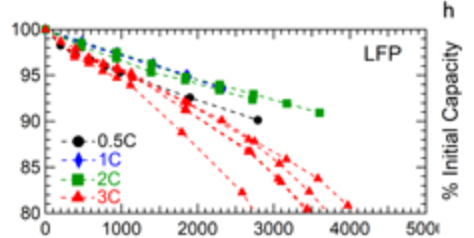Introduction
The most important and expensive piece of equipment in your EV is undoubtedly the battery. It is the equivalent of the engine in a gas or petrol car. And as we have previously written, while replacing an EV battery is getting easier with time, it can still be a long and painful exercise. So it makes sense to do everything you can to maintain battery health.
What are the things you can do to maintain the health of your battery? We go through a list of things we think could make all the difference in ensuring that your battery and EV lasts for a long time!
Understand your Battery Type
Most EVs today use lithium-ion anode batteries which are known for their energy density and longevity. But the cathode used in the battery will tend to vary with every EV model. Most batteries of EVs sold in the US still use an NMC cathode, while the LFP cathode is rapidly gaining popularity because of its increased safety and low cost.
LFP cathode batteries have a distinct advantage when compared to both NMC and NCA cathodes, because they tend to have longer cycle lives. A “cycle” in battery life refers to one complete process of fully discharging a battery and then recharging it back to full capacity, essentially representing one full usage cycle of the battery. The number of cycles a battery can undergo before its capacity significantly degrades is known as its “cycle life”. The more cycles a battery has remaining, the more life it has remaining.
Why does battery chemistry matter all that much?
Not all battery chemistries are created equal. The Journal of the Electrochemical Society published a detailed study evaluating different battery chemistries and the impact of external factors on battery life. In the chart below, the blue LFP battery line lasts for a larger number of cycles when compared to the NMC and NCA battery. This illustrates the battery life advantage that LFPs have over other battery chemistries.

Charge Smartly
Follow the Appropriate Charging Protocol
The battery chemistry will determine how you charge. For example, an NMC cathode battery is chemically and structurally unstable towards the end of a charging cycle when the voltage is higher, so it is recommended that they are charged only up to 80%. LFP batteries are a lot more stable when charged to a 100%, and can be fully charged frequently without any risk of degradation.
Avoid DC fast charging whenever possible
The real world data on this is unclear at best but there are some reasons to believe that while DC fast charging is convenient, it generates a lot more heat compared to the slower alternative of level 2 charging, which can degrade battery cells over time. In any case, even if you don’t believe that DC fast charging is harmful, it makes sense to “passively charge” your EV whenever possible.
Passive charging is charging when you charge as part of your regular schedule without actively seeking a fast DC charger. Most passive charging occurs at lower charge rates i.e. <20 kW but by doing it frequently enough, you avoid having to go to the “gas station” and waiting for half an hour. And that’s not all, if you charge overnight at home, your electricity cost will also be much lower than the cost to charge at a public space.
Mind the Temperature
Keep your EV away from the elements, if possible
Batteries tend to have an optimal ambient temperature range for operating, typically 30F to 115F. If the ambient temperature is outside of this range, batteries will have to self regulate their internal temperatures.
Batteries self regulate by drawing down on the existing battery to heat during cold weather and cool during extremely hot weather. If this happens, the battery’s charge will appear to drain at a rate that’s faster than normal. It is hard to avoid the elements when you are driving but when you are parked it may make sense to choose a covered parking spot.
Preconditioning
If your car is being charged overnight during winter, you have the option to precondition your EV before you start your commute the next morning. Preconditioning allows you to condition the battery to it’s optimal temperature using electricity from the grid instead of draining electricity from the battery. Preconditioning can also set cabin temperatures to your desired level so that you can save some juice for the drive. If you don’t precondition your EV and take it out to drive in the cold, your battery has two battles to fight, it has to first optimize its internal temperature, and it then has to get the cabin temperature back up as well.
Drive Well
If you love hitting the pedal and going at 120 mph on the highway every single time you drive, it can eventually take a toll on the life of the battery. This is because higher the power draw or rate of energy discharge when you accelerate, the higher the stress there is on the battery. If the battery is subject to stress on a constant basis, it will degrade faster.
In the chart below, the y axis is the battery capacity while the x axis is the number of charge cycles. The different lines represent the degradation of battery capacity at different rates of discharge, the black line being the lowest discharge rate and the red line being the fastest discharge rate. It is clear that the red lines, which have the highest discharge rate, lose battery capacity much faster than the green, black and blue lines.

Conclusion
When you buy an EV, you are buying a battery with a finite useful life. It is not hard to see a future where every second hand EV has a certified “Percentage of Battery Remaining” stat or “Estimated Range Available” stat attached to it. Maintaining your EV battery’s health becomes absolutely critical to maintaining the value of your EV!